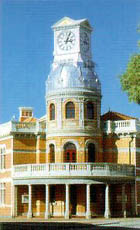
|
MIDLAND Western Australia
A SHORT HISTORY
|
||
| Midland town owes its existence to a decision by the colonial Government of Western Australia in 1886 to allow a London syndicate (the Waddington syndicate) to build a line of railway connecting Guildford with Geraldton. |
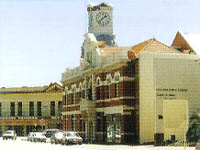
|
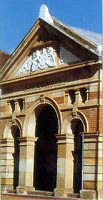
|
As vacant land within the Guildford area was limited, the Government granted the syndicate a piece of land near the junction of the York and Upper Swan Roads, on which to build its main construction headquarters and workshops. This point eventually became the permanent junction between the new railway and the existing Government line to York.
Construction of the new railway line began in 1886 but ceased in 1887 due to financial problems. In 1890 the syndicate was re-organised as the Midland Railway Company and construction was recommenced. A tent village of railway workers quickly sprang up on the site of the Company's workshops, and the location became known as "the Midland Junction". |
| In order to properly house the large number of Company employees, the Government in 1890 declared the area a townsite and released for residential development a quantity of Crown land near the Company's workshops. At the main road junction a triangle of land about one acre in area was reserved for public buildings, This reserve eventually housed the Town Hall and Council Chambers, the Post Office and the Court House. |
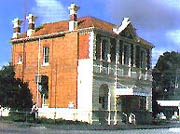
|
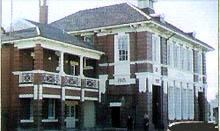
|
The railway line between Midland Junction and Geraldton was completed and opened for general traffic in 1895. The people of Midland Junction now began to look about means to ensure the town's continued existence and growth, and a Progress Association was formed to press for the establishment of a municipality. The government quickly agreed to the request, and in December 1895 proclaimed the Municipality of "Helena Vale". The new name never really caught on, and the original name of Midland Junction was restored in 1901. |
|
By 1897 the population of Midland had reached 1,107 people. It was hoped that the town would eventually become a major industrial centre, but little success was achieved in attracting private industry, and in the long run Midland Junction became better known as a centre of Government enterprise.
The most important initiative in this respect occurred in 1895, when the Government announced that it intended to establish its main railway workshops at Midland Junction. A block of 167 acres was reserved adjoining the Helena River for the purpose, but construction did not begin until 1901. The workshops were completed and occupied by January 1905. The complex was the most advanced and complete of its kind in Australia at the time, and remained the mainstay of Midland's existence and prosperity for many decades to come. |
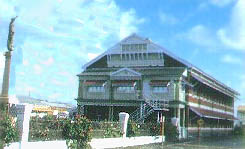
|
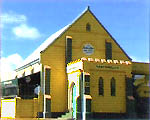
|
Ahough by 1909 the railway Workshops employed over 1200 people, many of the workers preferred to live in the outlying suburbs of Guildford, Bayswater and Bassendean where the cost of building was considerably cheaper than in Midland Junction. The boom atmosphere of Midland Junction resulted in land speculation, and the price of building lots eventually rose beyond what the average worker could afford. Many lots were bought by investors, professional people and those on high incomes, so that it was not until after the Second World War, that Midland developed into a predominantly working class suburb. |
| I was stated in 1910 that the town's business and shopping area had been developed to cater for a population of 20,000, but by 1909 the population had only reached 4,500. Because of the large extent of the early subdivisions, lots on which houses were built tented to be widely scattered and separated by patches of scrub. This remained the pattern until after 1945. |
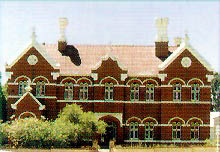
|
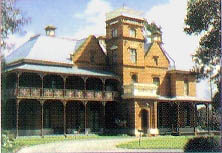
|
Midland's main period of growth occurred in the years between 1901 and 1914. In those years the stock sale yards and the Government abattoir were established, and by 1914 the town contained a full range of amenities, including five hotels, churches, picture theatre, recreation grounds and a racecourse. The interwar period was a time of much slower growth and very little development took place. |
|
Following the Second World War, Midland remained the main commercial and retail centre for the suburbs surrounding it. For this reason it was chosen in 1970 as the proposed Sub-Regional Centre for the Eastern Corridor of the Metropolitan Region. The two major events in the early 1990's were the building of the headquarters of the Department of Land Administration (DOLA) and the closure of the railway workshops.
In the history of Midland there have been periods of rapid growth followed by quiet periods, but whatever the ups and downs of fortune, its seems certain that Midland will remain an important centre in the developing metropolis of Perth. |
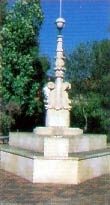
|
Plan of Midland

(for enlargement, click on the image) |
| Link to the City of Swan Heritage Municipal Inventory |
 |
| Text: M. Bourke & B. Dundas
Photos: B. Jackson
MIDLAND SOCIETY INC. PO Box 2266 MIDLAND WA 6936 AUSTRALIA |
The Rise of Midland